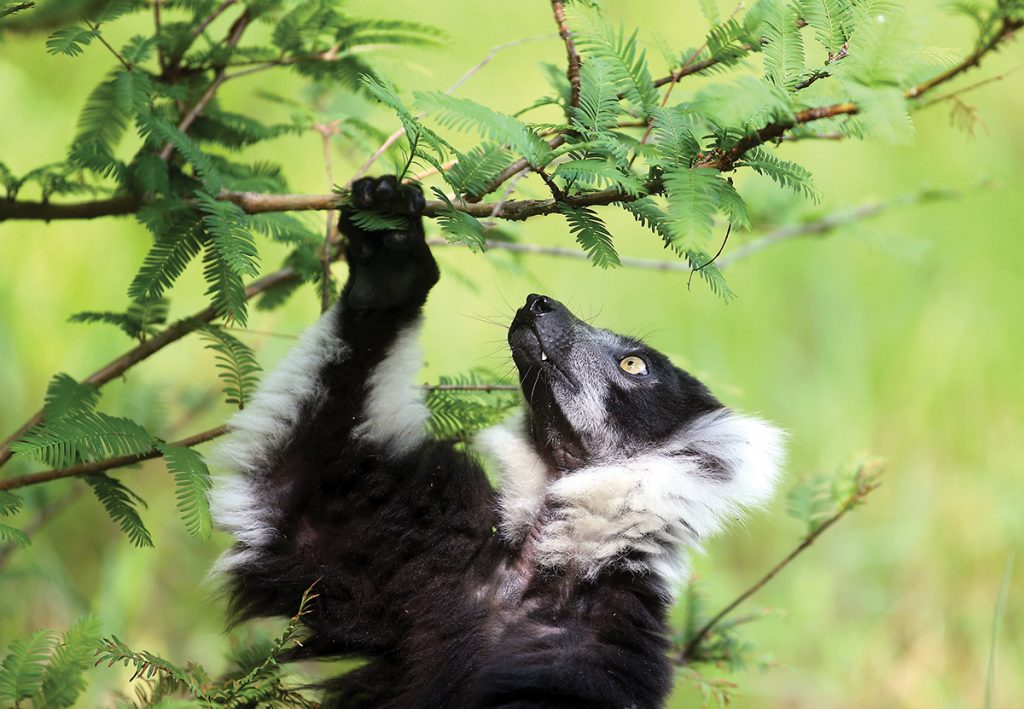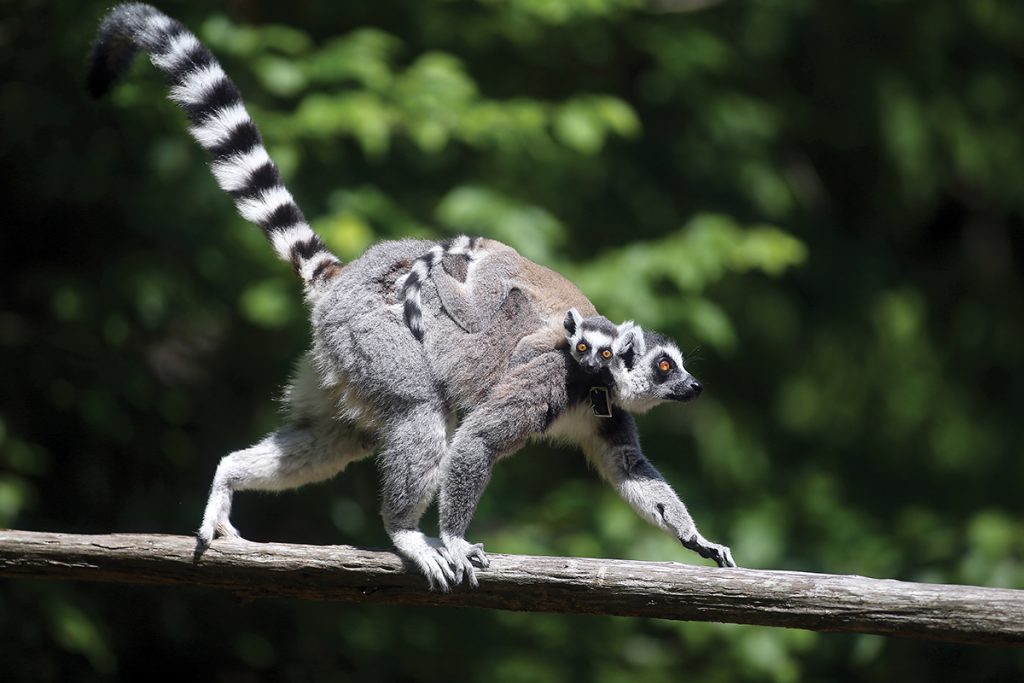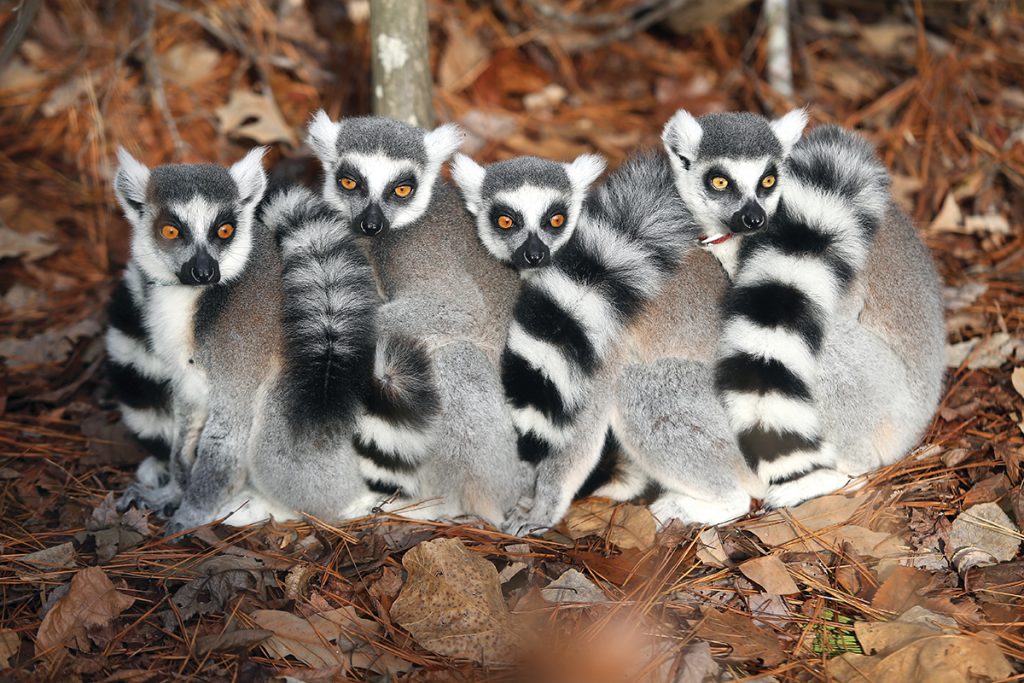This sanctuary for lemurs in Durham leads the world in researching and protecting these unique primates from Madagascar. And it’s open to visitors!
by Hampton Williams Hofer | photography by Bob Karp
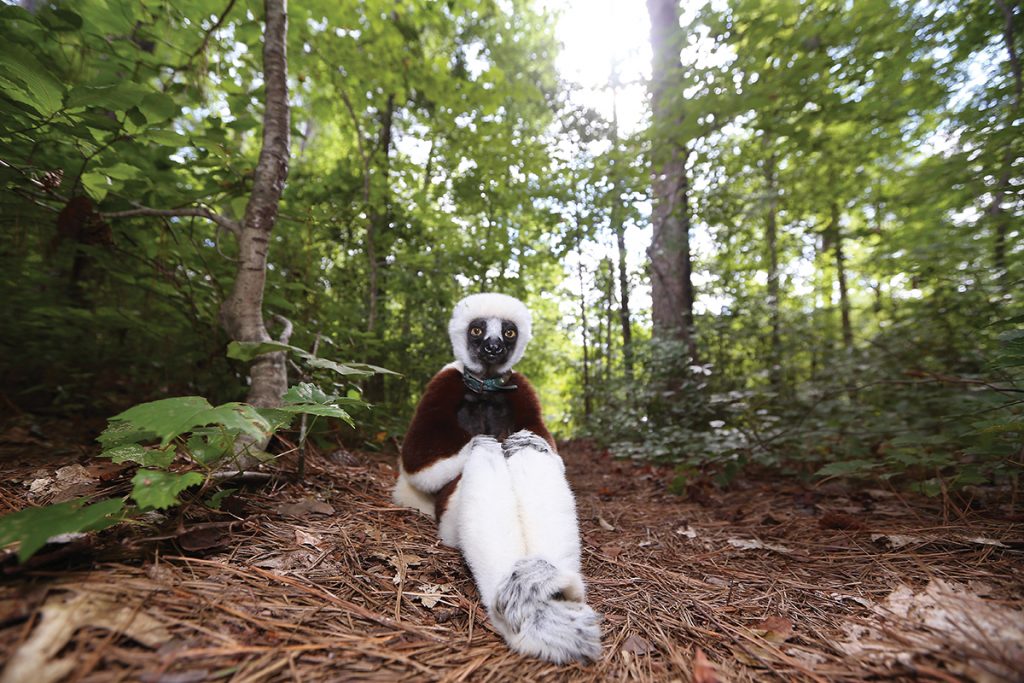
Nestled in the forest, 2 miles from Duke University’s main campus, is the largest and most species-diverse lemur sanctuary on earth. There, hanging in the North Carolina pines, hundreds of these curiously endearing primates also hang on the edge of extinction. The Duke Lemur Center aims to save them.
The rarity of lemurs is almost unbelievable: millions of years ago, their ancestors rafted across the Mozambique Channel from mainland Africa — perhaps atop vegetation knocked loose by a cyclone, maybe even hibernating on the way — and arrived at an island where they had very few natural predators. While lemurs on the mainland went extinct, those on Madagascar blossomed. Isolated for 150 million years, they evolved uniquely, taking up almost every niche on the island.
Today, there are over 100 known species of lemurs — broadly defined as primates native to Madagascar and the nearby Comoro Islands — who are wide-eyed, wet-nosed and long-tailed, ranging in size from that of a mouse to that of a small child. Lemurs are full of personality quirks and gentle in nature, and they vary greatly by species. There are the sifakas, who hop on their back legs with their arms raised, and the crowned lemurs that live in the trees and have long noses and keen senses of smell. The mouse lemur has cartoonishly big eyes and tiny curled hands.
Habitat loss now threatens nearly all species of lemurs, as some 90% of Madagascar’s forest cover has fallen to human development. Climate change, poaching and the illegal pet trade are factors, too. It’s easy to see why someone would want a lemur as a pet, what with the soft fur and button noses, but that’s problematic, even though it’s legal in North Carolina. Lemurs are wild, social animals, requiring a lengthy period of maternal contact, and those raised by humans are often isolated, developmentally delayed and riddled with psychological problems.
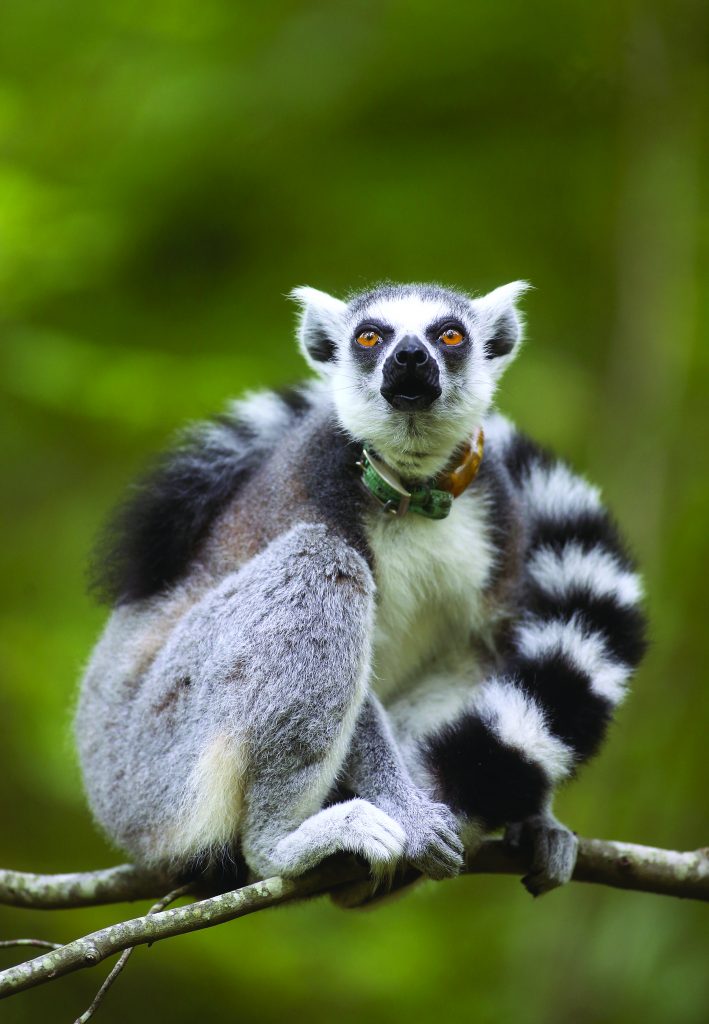
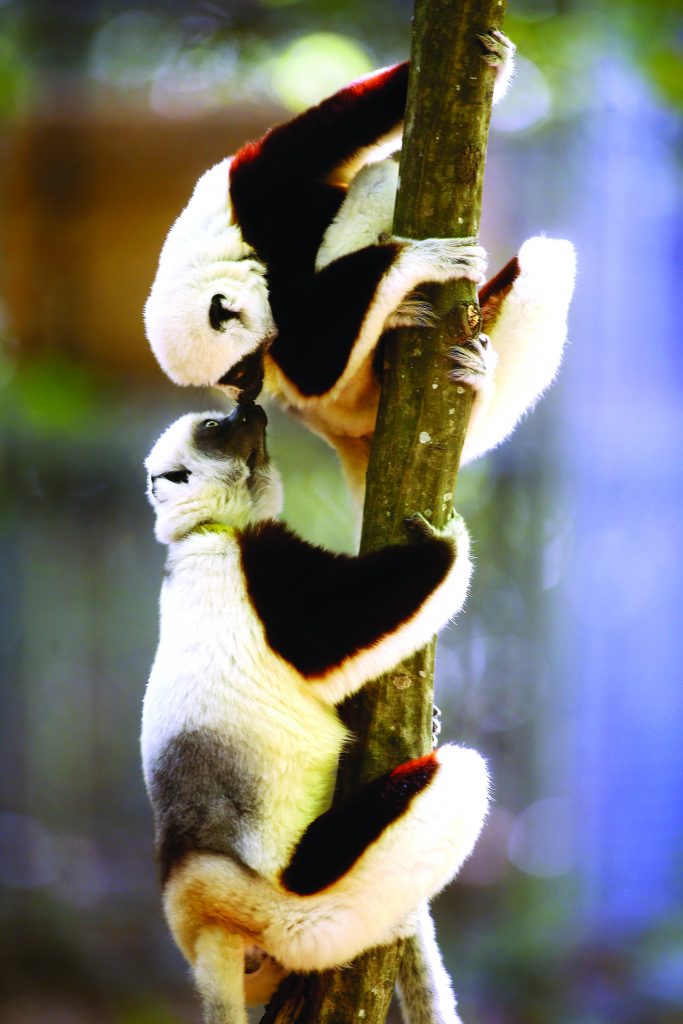
The DLC is working to teach the public about these dynamic animals, to research them in order to better protect them in the wild and to keep species alive through breeding. Their work takes place locally and on the ground in Madagascar. “Our mission is to learn everything we can about lemurs, so we never know a world without them,” says Sarah Sorraia, the DLC’s director of communications.
The Duke Lemur Center started in 1966 as a collaboration between John Buettner-Janusch, who was studying biochemical genetics in lemurs at Yale University, and Peter Klopfer, who was studying maternal behavior in mammals at Duke University. They dreamed up a primate facility in Duke Forest aimed at combining their research perspectives, a “living laboratory” to explore the genetic foundations of primate behavior.
Established initially on 80 acres, the center has expanded to 100 acres. Since its founding, the DLC has cared for and studied some 4,000 animals across 31 species of nonhuman primates, including lemurs, lorises and tarsiers. Outside of their native Madagascar, more lemur species live here in the Triangle than anywhere else in the world.
Data from research conducted at the Duke Lemur Center has led to groundbreaking insights into the genomics and health of lemurs. One of the most fascinating things about them is their resemblance to our earliest primate ancestors — some species even develop the same plaques and tangles found in the brains of humans with dementia. Other species go into a form of hibernation, which is unique for primates. The better we understand lemurs, the more we’ll understand primate evolution and human health and behavior.
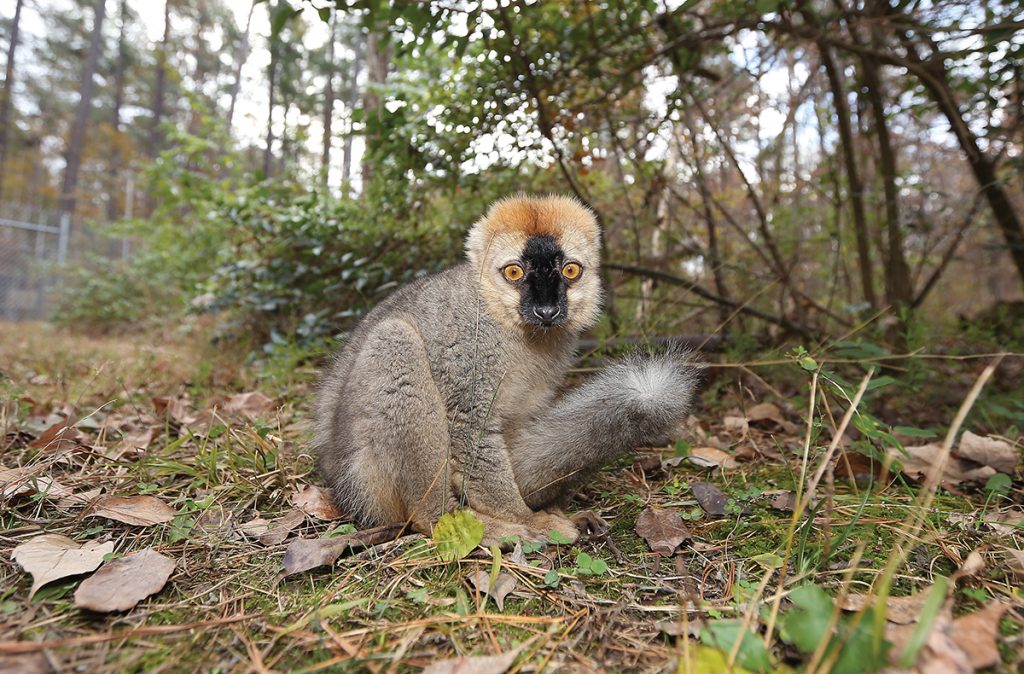
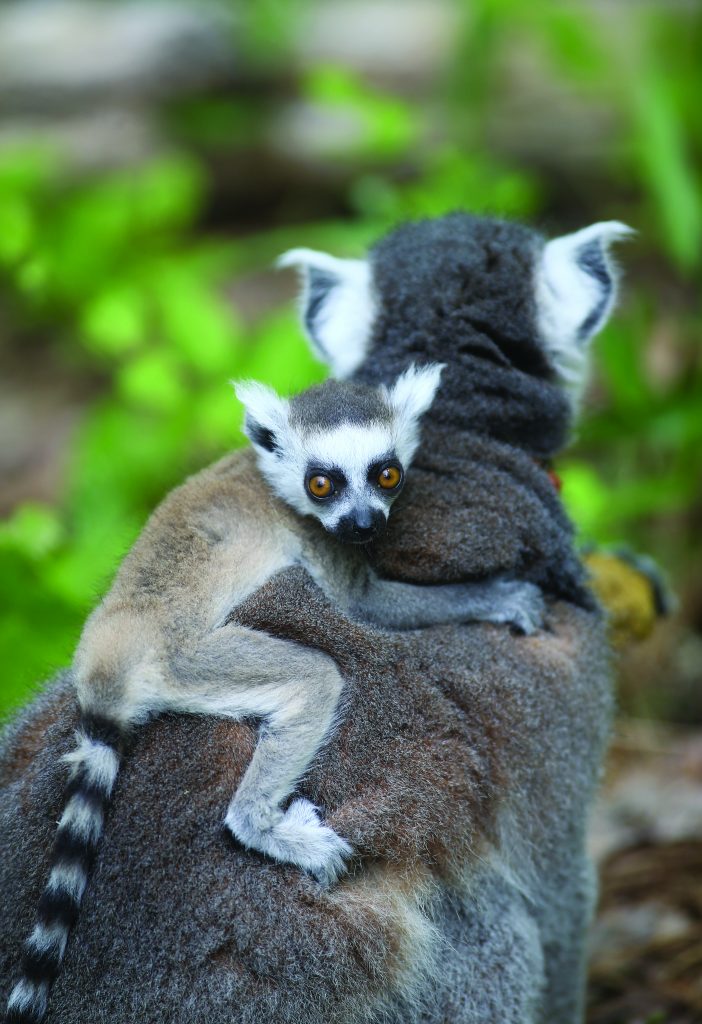
Essential to DLC’s mission is its successful conservation breeding program, which aims to preserve vanishing species like the aye-ayes. More than 200 lemurs currently thrive at the Duke Lemur Center, providing a genetic safety net for their species, and more than 3,400 births have been celebrated in Durham since the DLC’s inception. Recently, a breeding pair of blue-eyed black lemurs arrived from Madagascar, where they were born at a conservation center.
Here, they will improve the gene pool of captive members of their critically endangered species. While many of the founding lemurs of the DLC came from Madagascar, these were the first new arrivals to the U.S. in 24 years due to strict import and export regulations set to protect the animals; it took three years of permitting just to get this pair here.
The Duke Lemur Center has also collaborated for 35 years with conservation organizations and communities on the ground in Madagascar, seeing the place where these animals evolved and listening to cultural stories about lemurs. DLC employees have visited the zoos in Madagascar to help care for the animals, improve husbandry practices and create new breeding programs there.
DLC conservation technician Grayson Pellerito recently returned from a three-month stint in Madagascar, where she worked to support zookeepers at a facility near Toamasina, on the eastern coast. “It feels really rewarding to work at a one-of-a-kind facility, and the fact that other people in animal care from around the world turn to us — it’s incredible,” she says.
Back in Durham, Pellerito’s days include animal observation, cleaning, feeding, training and enrichment. Depending on the day, she might be weighing animals or deep-washing and rebranching their enclosures. “I think most people would be shocked by how much work goes into this job: understanding not just each species, but the specifics about each individual is incredibly important to a healthy colony with superb animal welfare,” says Pellerito.
The high expectations for animal care at the Duke Lemur Center are, she says, why she loves her job: “I know I can help give these animals the best life possible and work hard to keep them thriving.”
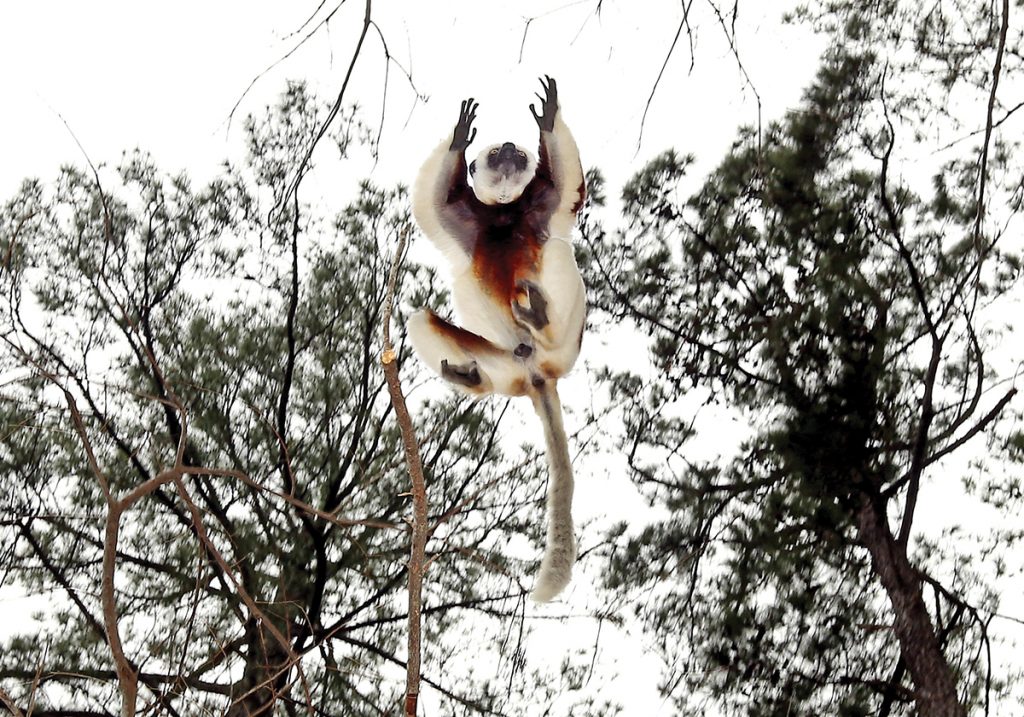
The work of the DLC goes far beyond housing the animals. They have a world-class education team, a research program, a devoted vet staff, primate technicians and hordes of volunteers. Last year alone, 135 volunteers completed nearly 1,000 hours of service, along with student, staff and corporate community groups that participated in service events.
Many tend to a vast organic garden, from which a recent batch of watermelon had the lemurs going wild: the nocturnal aye-ayes chew a tiny hole at the melon and use their long middle fingers to scoop out the fruit, never cracking the rind.
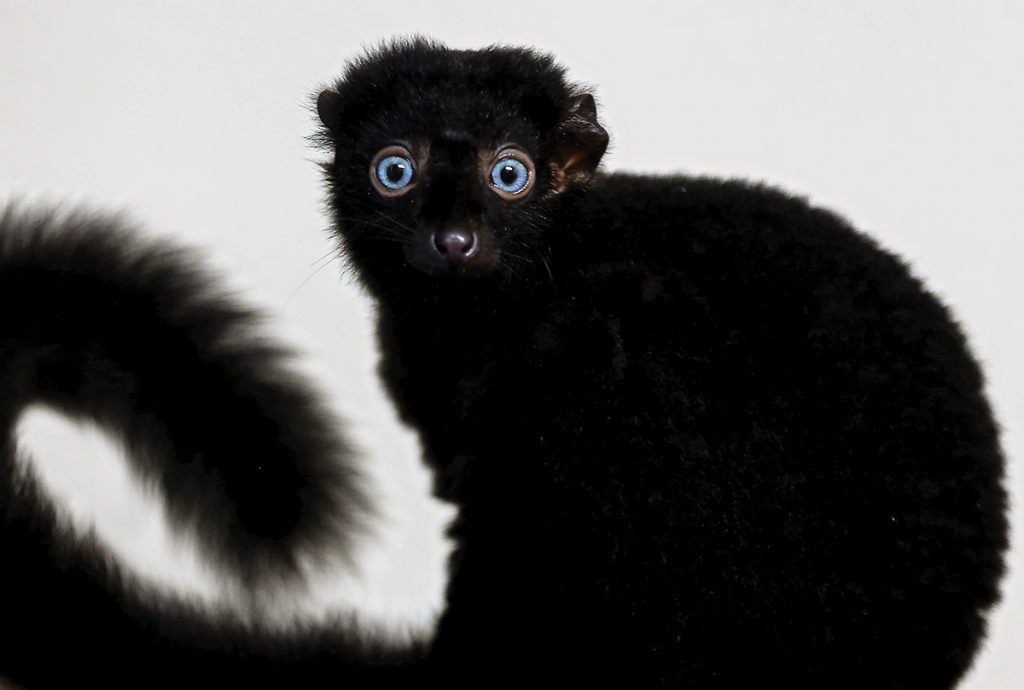
The noninvasive nature of the Duke Lemur Center’s research also means that it is open to the public. Depending on species and weather, lemurs at the DLC live in large, multi acre areas of natural forest, as well as in climate-controlled buildings with indoor and outdoor access. More than 35,000 visitors a year stop by to see fat-tailed dwarf lemurs nibbling on persimmons, ring-tailed lemurs swinging through the trees or a newborn pair of black-and-white ruffled lemur twins. Guests can visit the tour path from May to September or stop by the Lemur Landing Gift Shop year-round, with fees funding care and conservation initiatives.
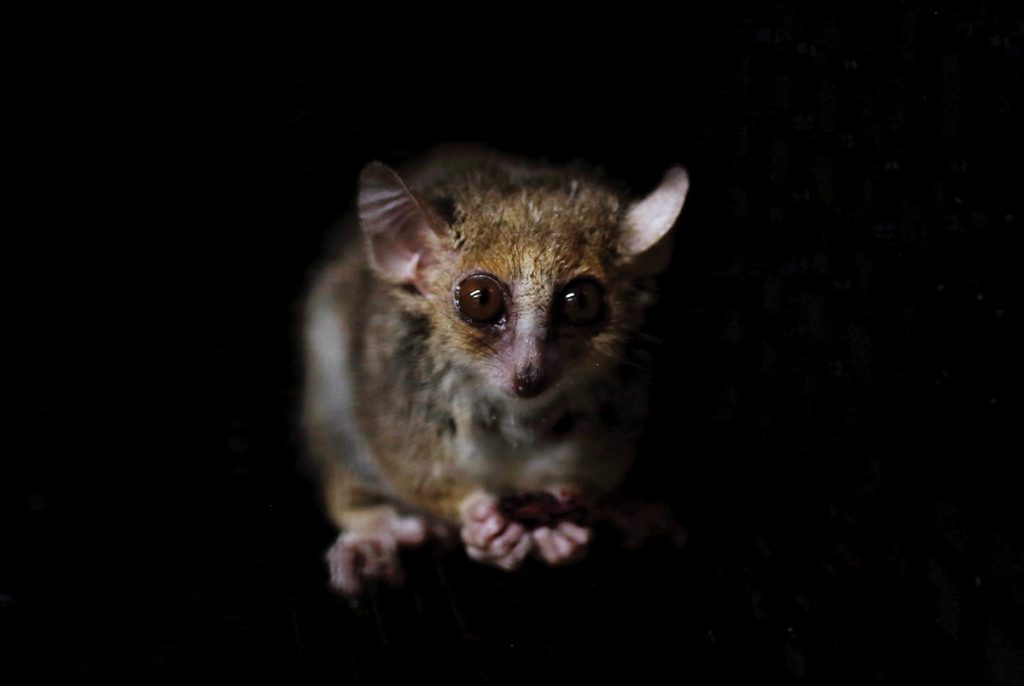
“Other cities also boast great restaurants and basketball championships, but no other city has anything like the Duke Lemur Center, which is so incredibly unique to Durham,” says Sorraia. Thanks to the vigilant work of the DLC, generations to come will have the chance to know and study lemurs, and follow in their paramount example of care and conservation.
This article originally appeared in the July 2024 issue of WALTER magazine

